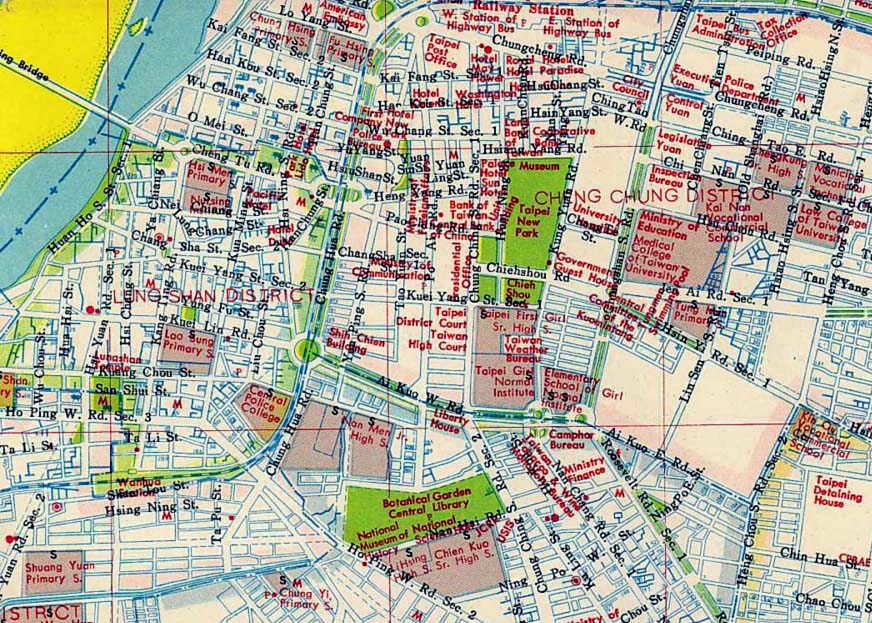
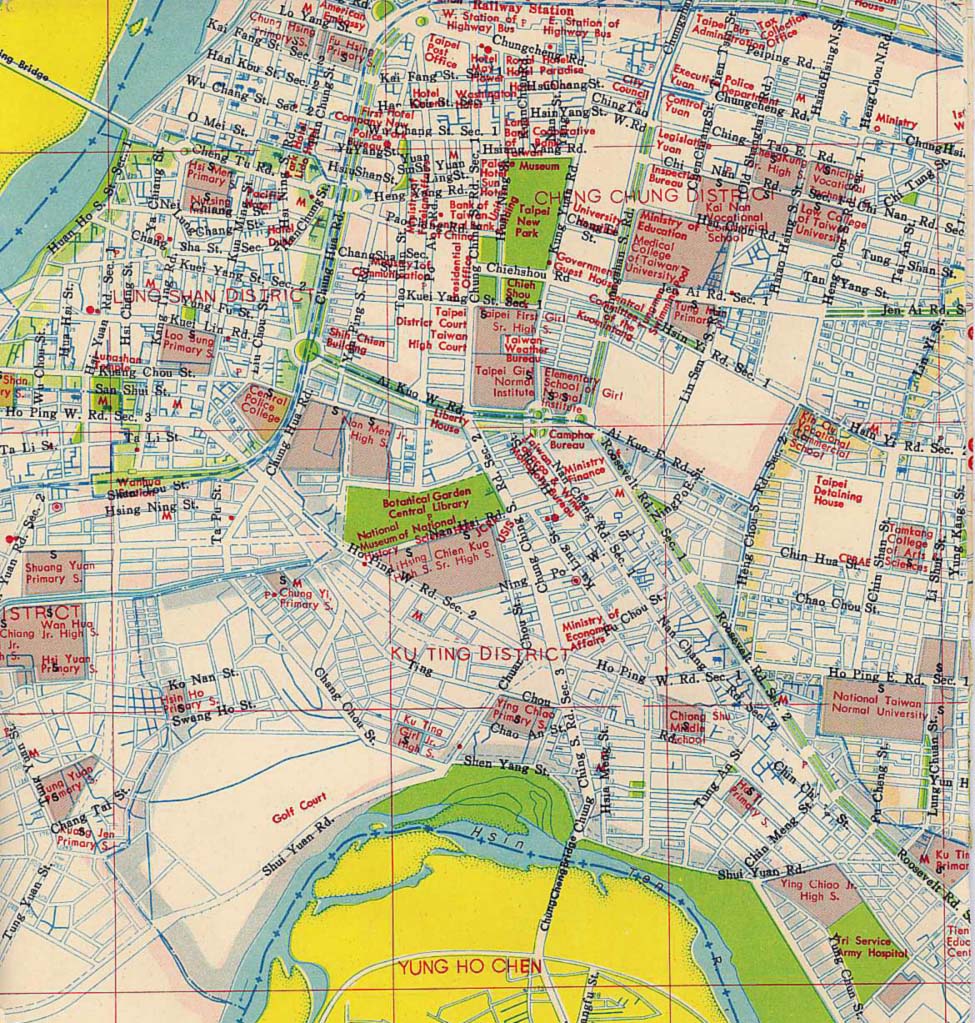
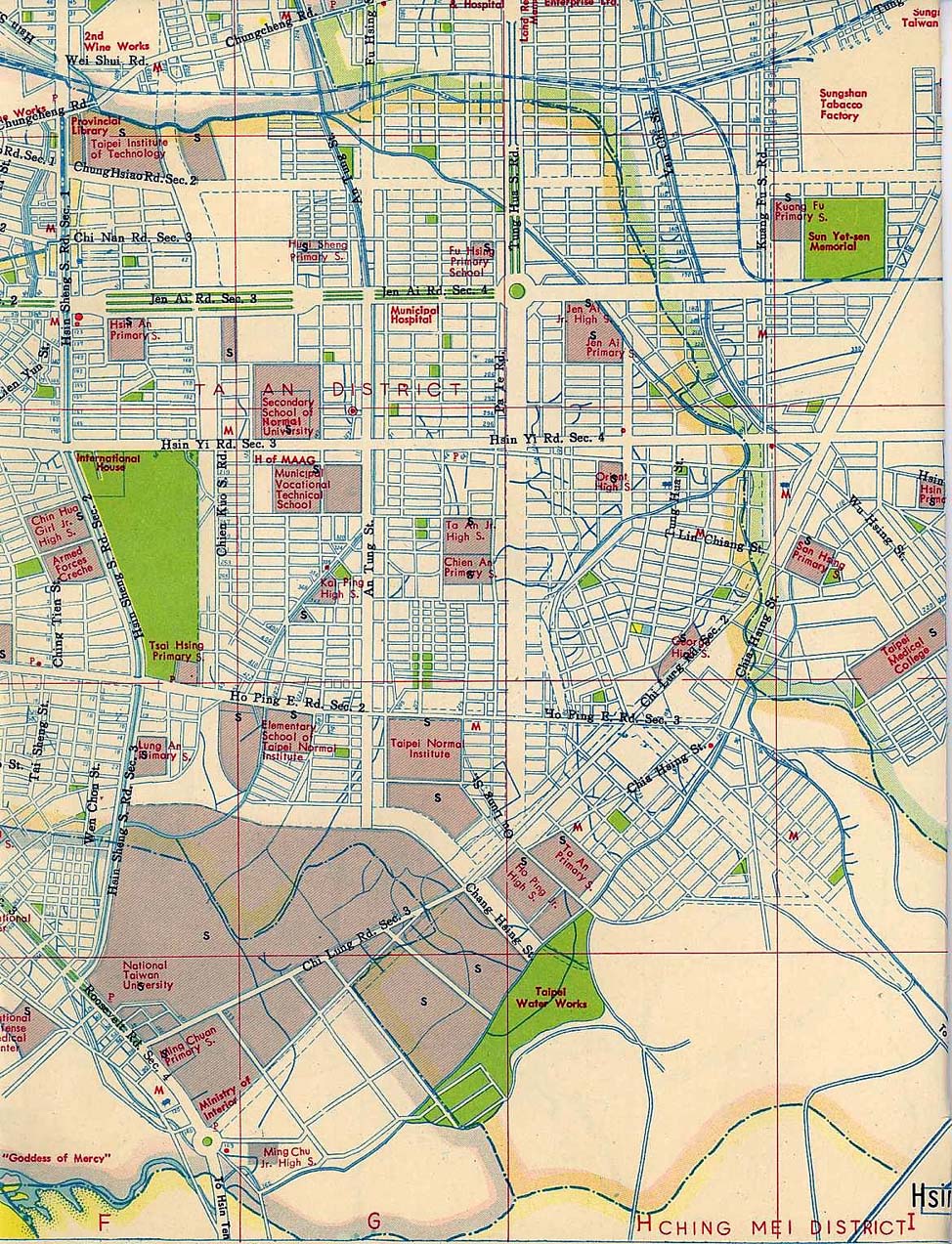
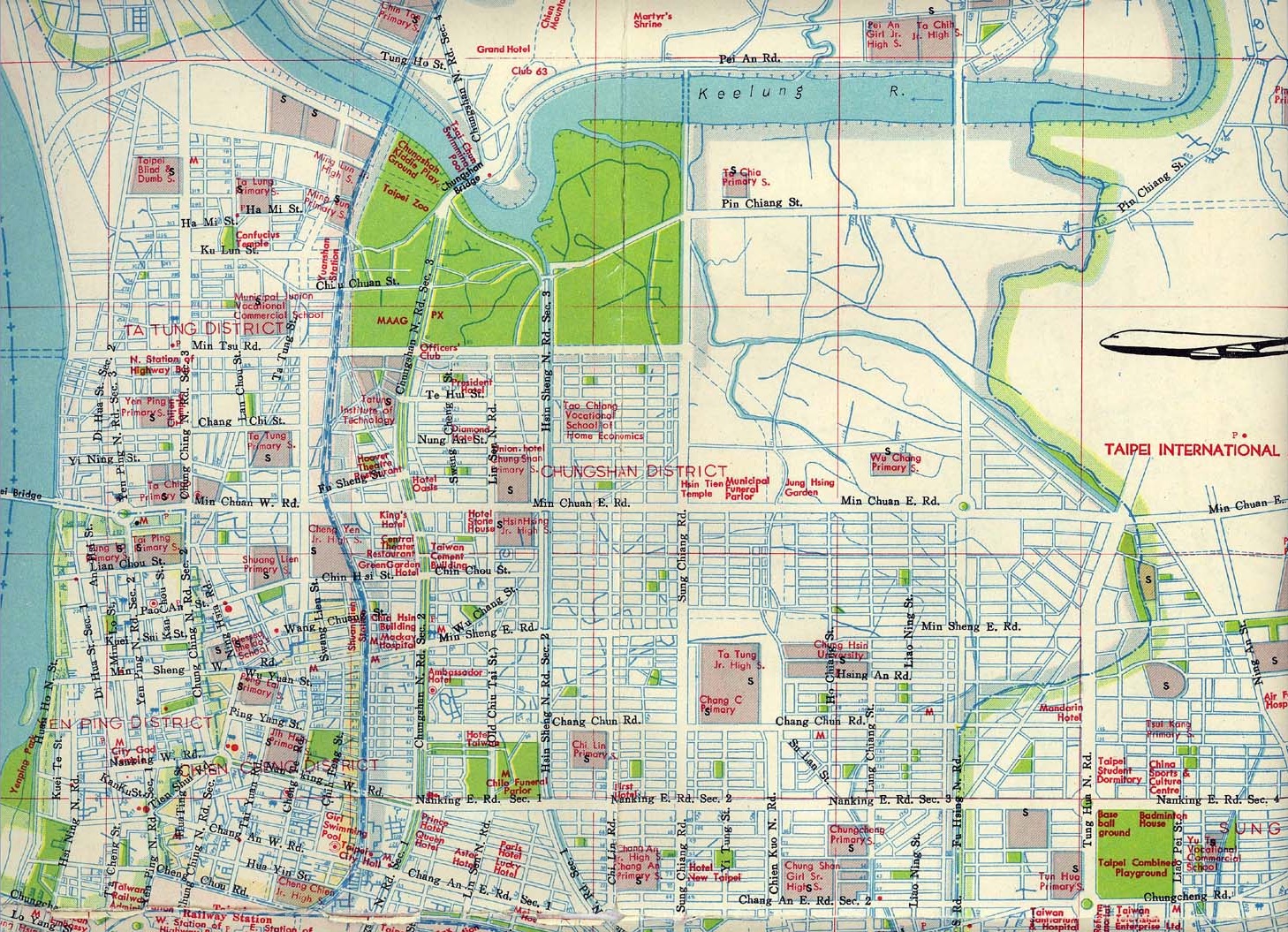
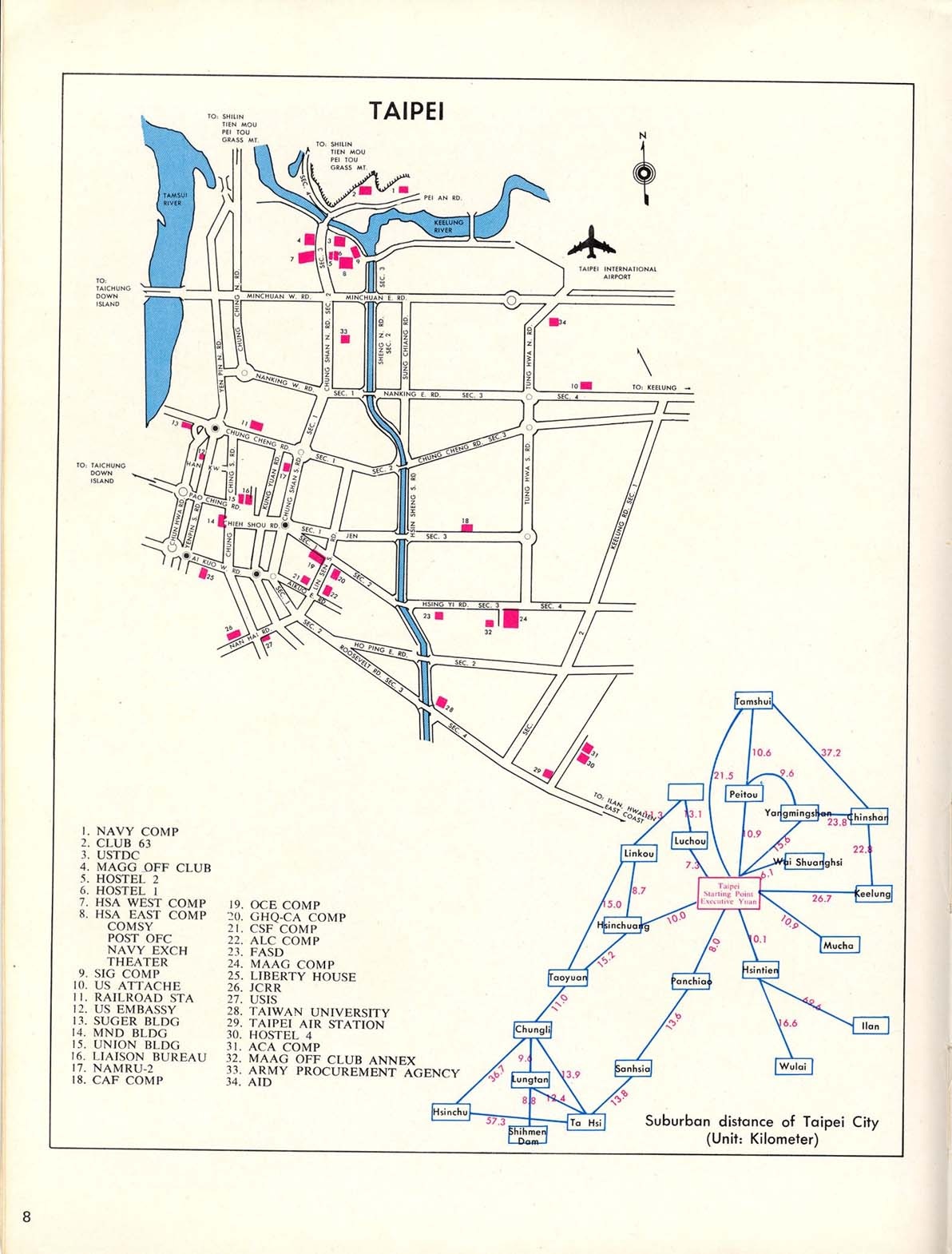





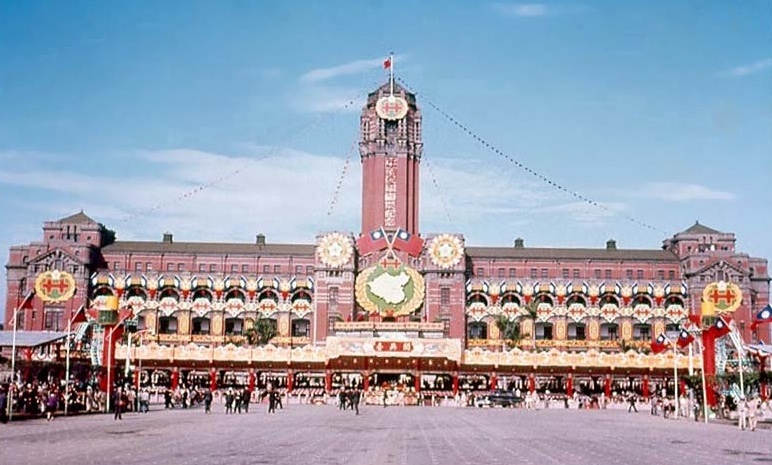
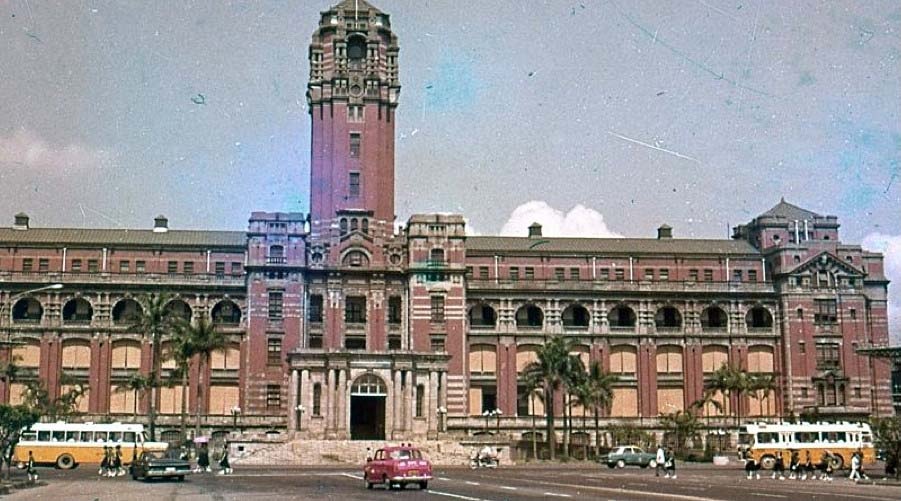
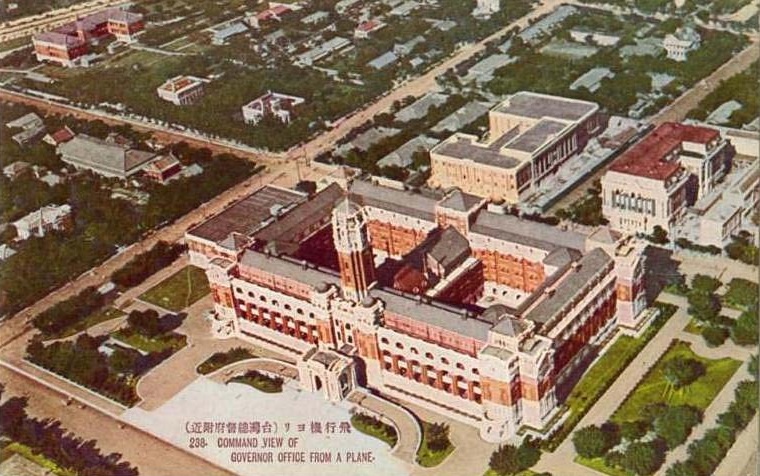
"The Presidential Office Building houses the Office of the President of the Republic of China. The building, located in the Zhongzheng District in the national capital of Taipei, Republic of China, was designed by architect Uheiji Nagano during the period of Japanese rule of Taiwan (1895–1945). The structure originally housed the Office of the Governor-General of Taiwan. Damaged in Allied bombing during World War II, the building was restored after the war by Chen Yi, the Governor-General of the Taiwan province. It became the Presidential Office in 1950 after the Republic of China lost control of mainland China and relocated the nation's capital to Taipei City at the end of the Chinese Civil War." ("Wikipedia")
"During the Second World War, the Presidential Office Building [the 'Governor's Office'] suffered heavy bombing from the Allied Powers and was severely damaged. On May 31, 1945, during an American air raid on Taipei, bombs hit the front left side, main lobby, and northern sections of the Taiwan Governor-General's Office. The fire burned for three days, damaging large parts of the building. Forty-five days after the air raid, Japan surrendered." ("Wikipedia")
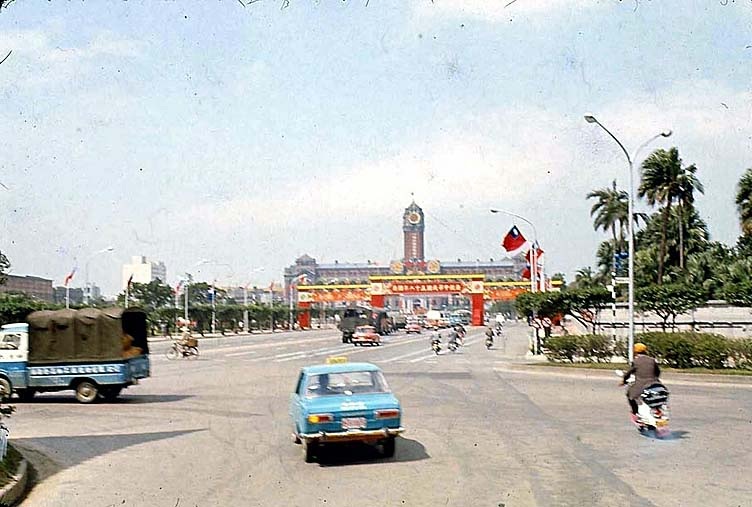
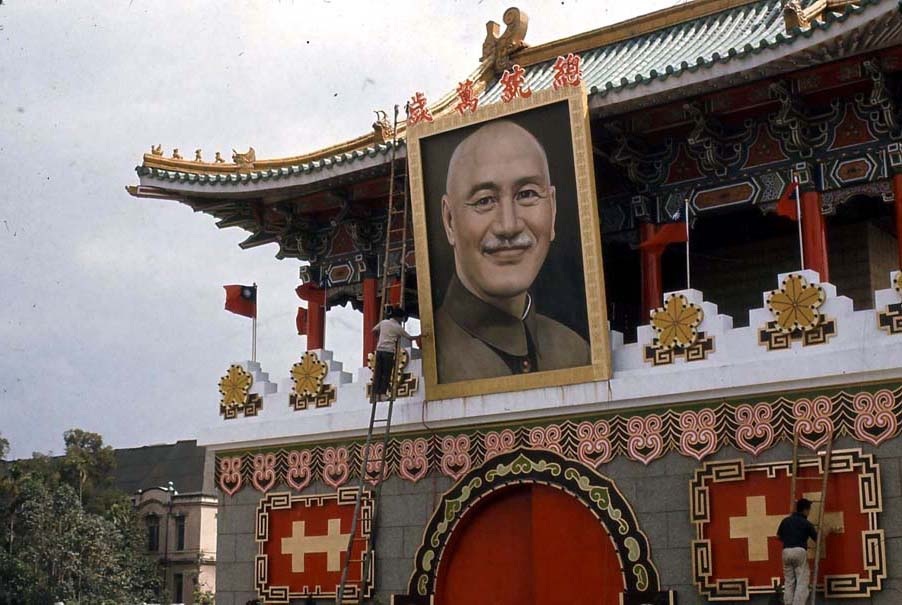
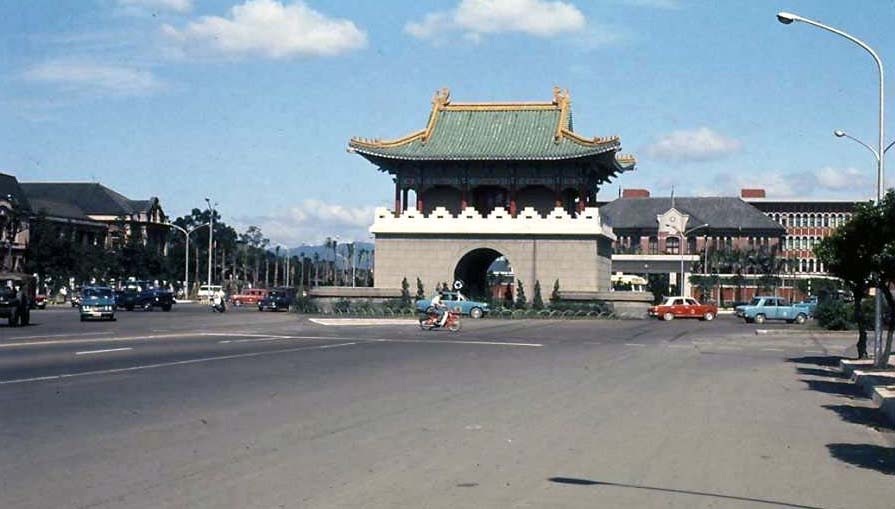
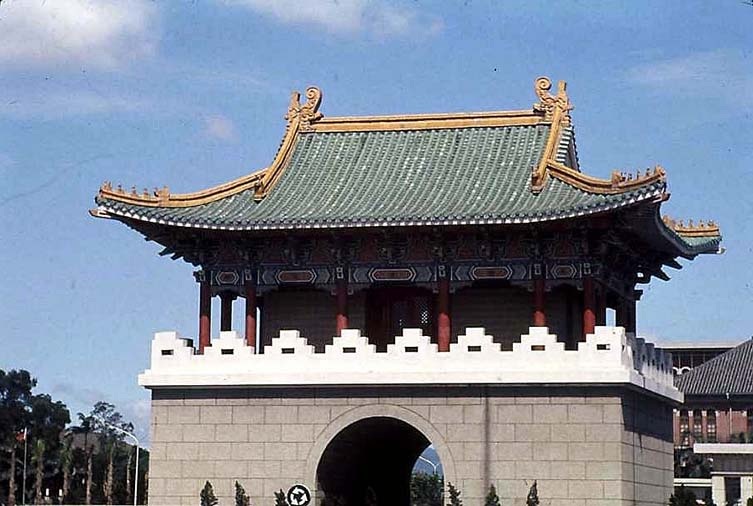
(1.) Double Ten Day (click here for website) (Chinese Independence Day) festival October 10, 1970. The Presidential Office Building is shown in the background. The building also served as the seat of the Taiwan Ministry of National Defense.
(2.) Gate shown in the next photos decorated with President, Chiang Kai-Shek's photo on Double Ten Day, October 10, 1970. The two large Chinese characters in gold below the photo on both sides of the gate signify Double Ten Day.
(3.) The building behind the ornate gate is the Kuomintang Party (KMT) headquarters. Shown behind the KMT building on the right is the College of Medicine of the (NTU) National Taiwan University (click here for website). Both buildings were located only a couple of blocks east of the Presidential Office Building (ref. maps above).
(4.) Another shot of the gate in the previous photos.
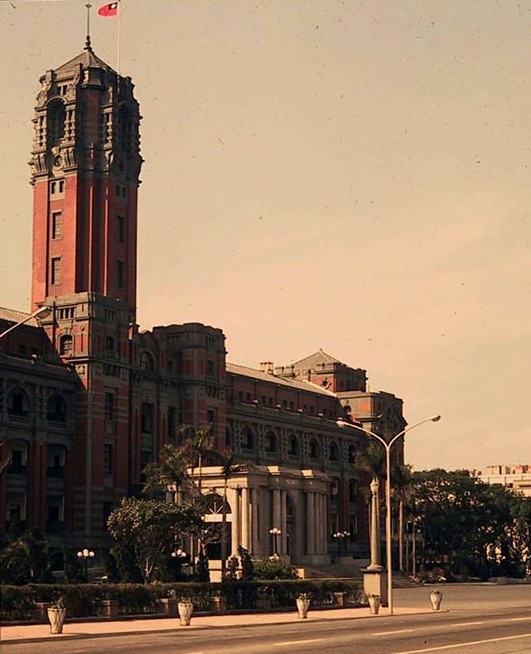
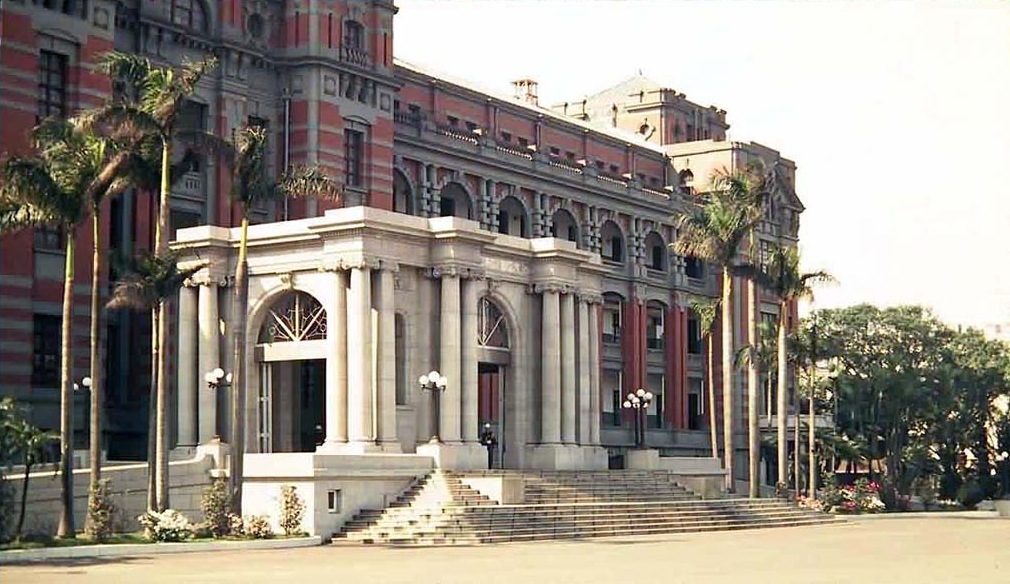
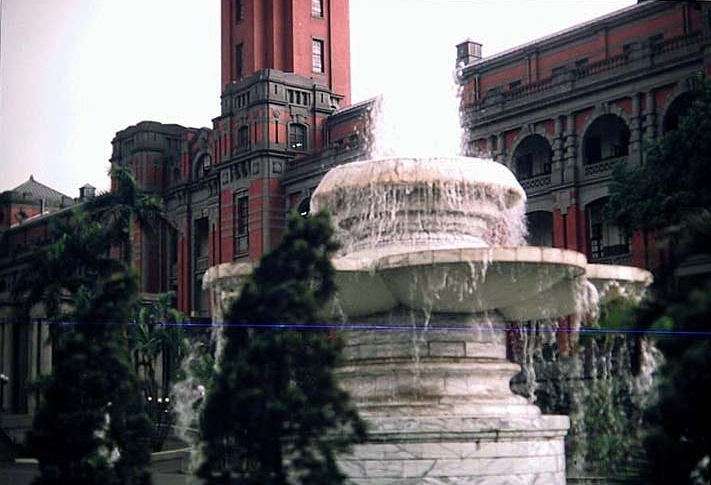
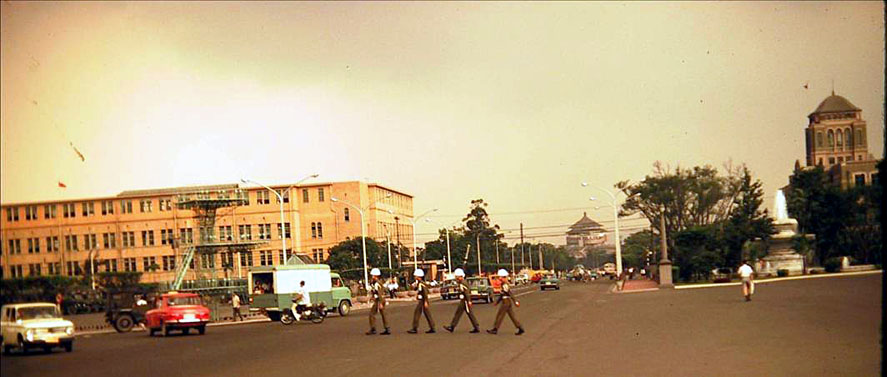


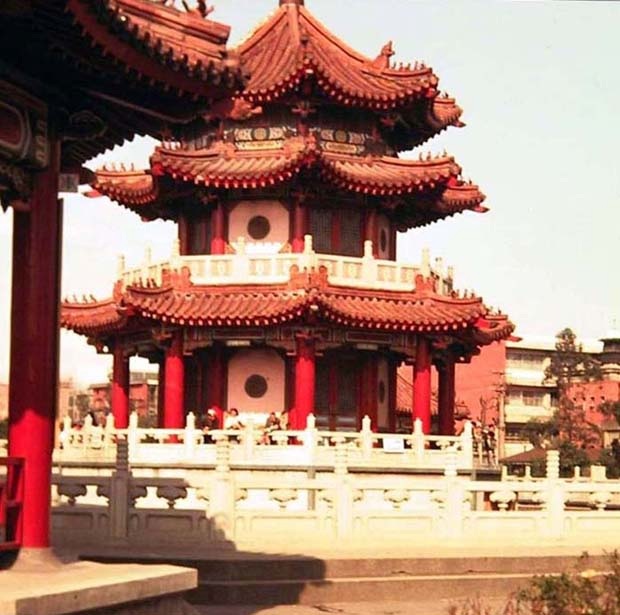

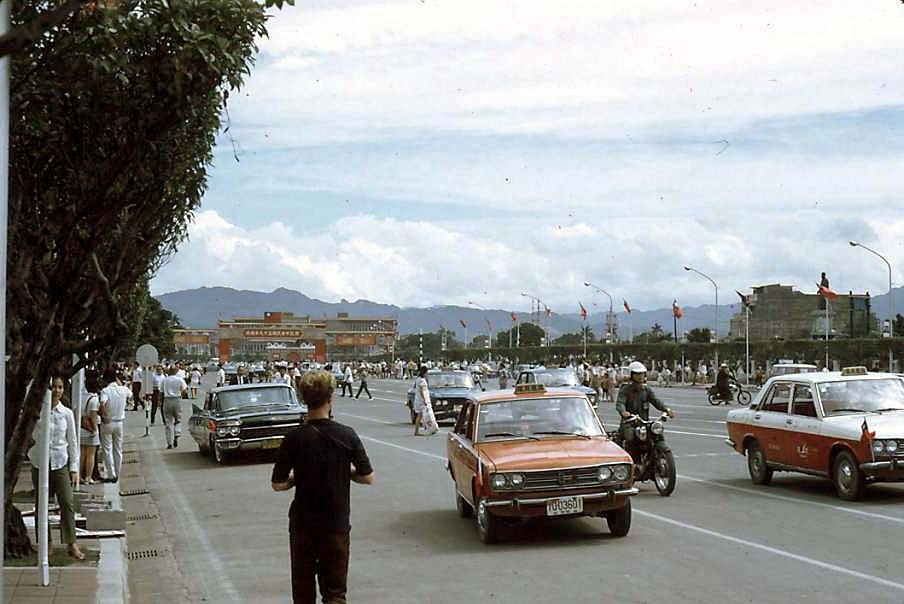
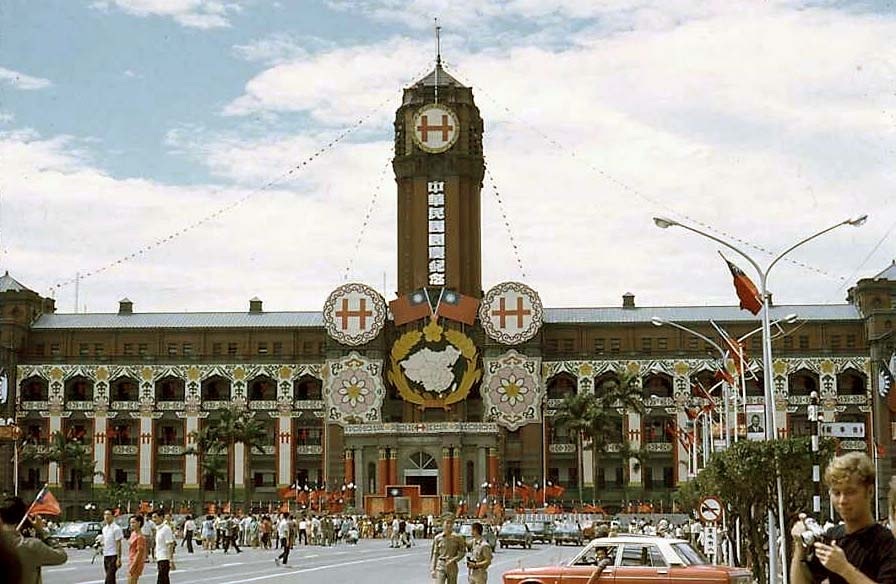
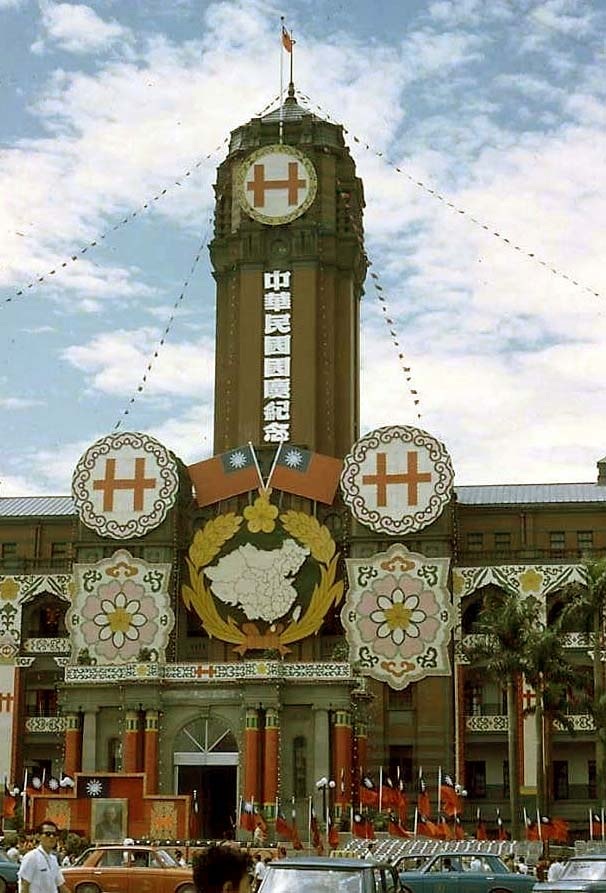
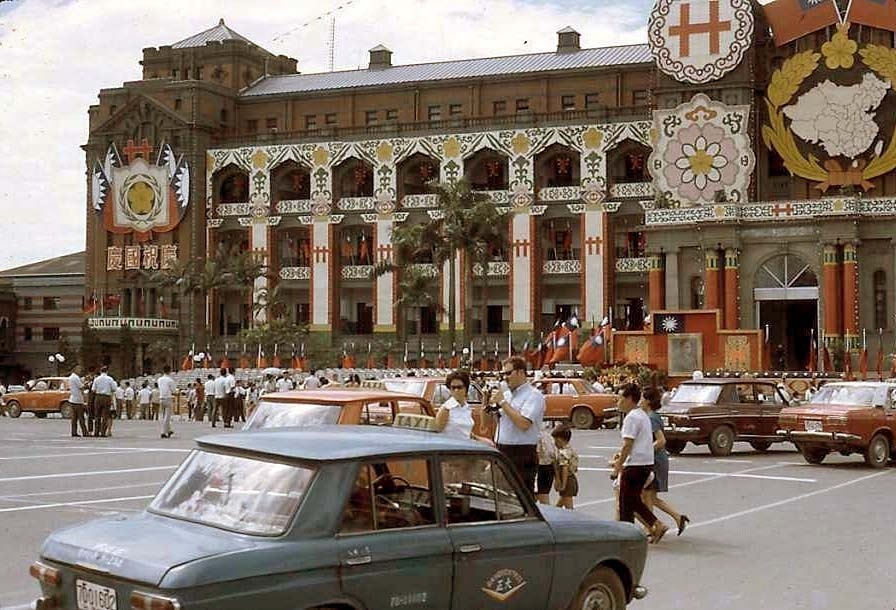
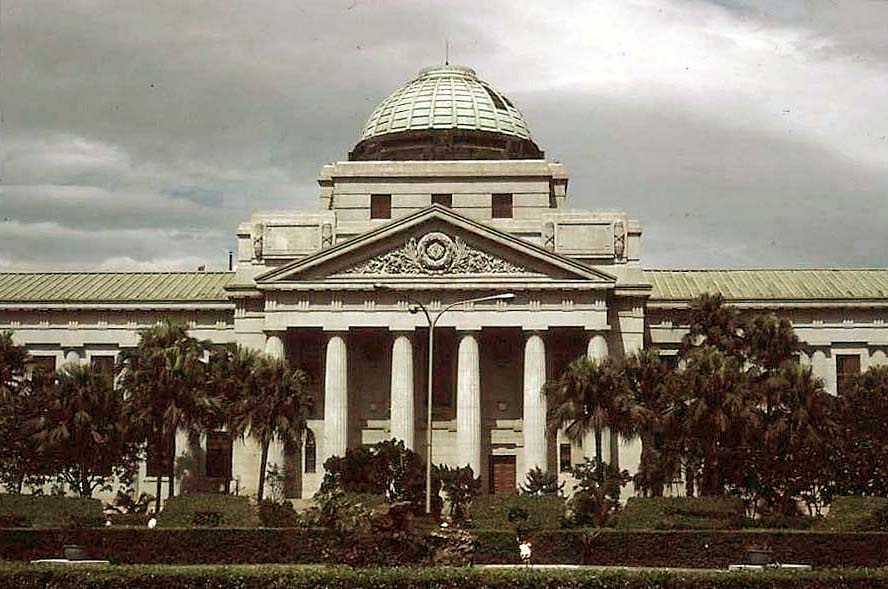
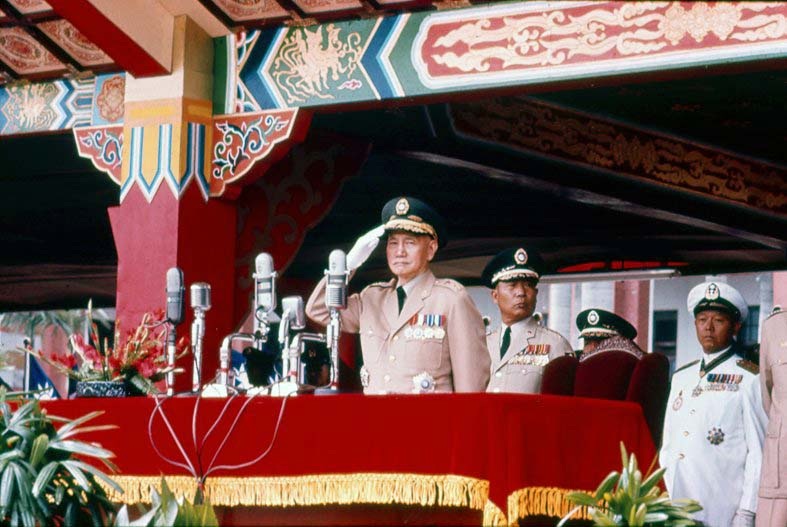
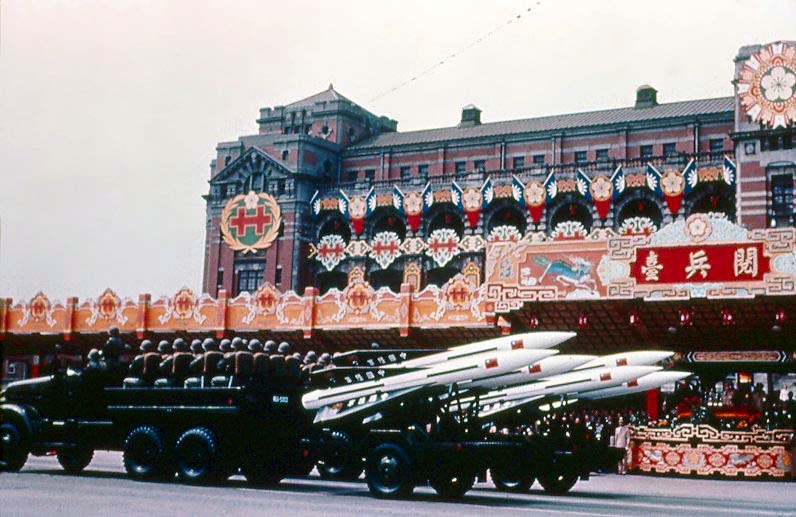

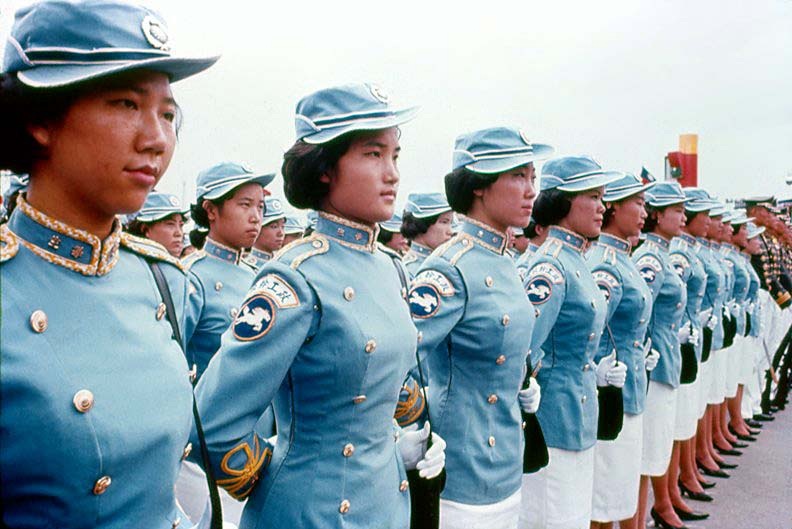
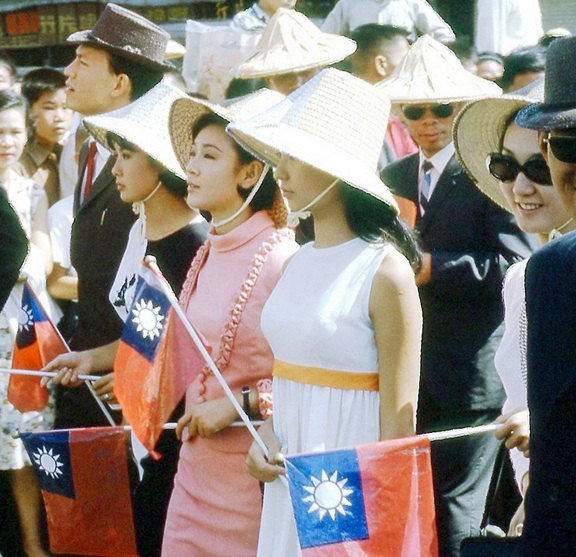
Double Ten Day Parade October 10, 1966. Les Duffin (SLK: 1962-63, 1964-66): "These are commercial slides I bought (photos: 1., 2., 3, & 4.). An example of the sort of parade that took place most years when Chiang Kai-shek (first photo) was still around and still healthy enough to preside. The scene was the large open space right in front of the Presidential Office Building (last photo). Some years there was a military flyover and some years not." [July 2, 2008] Les Duffin (SLK: '62-'64, '64-'66) (5.) 1967 Double Ten Day Parade.
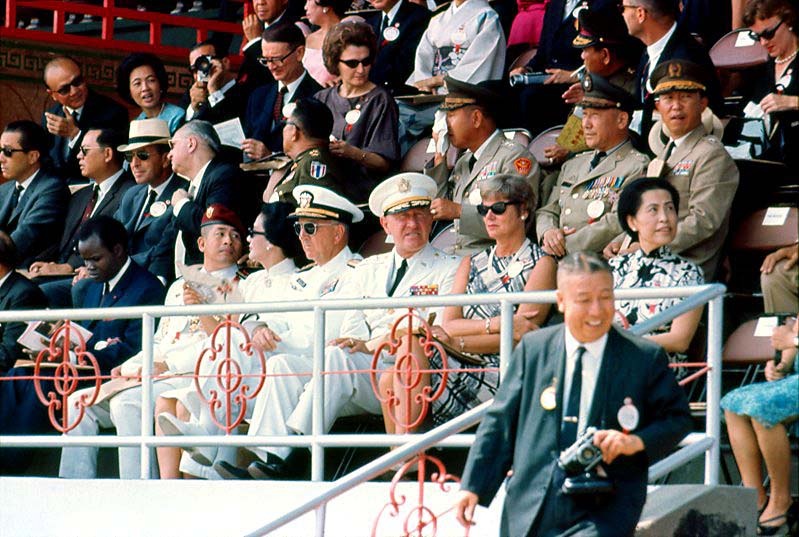
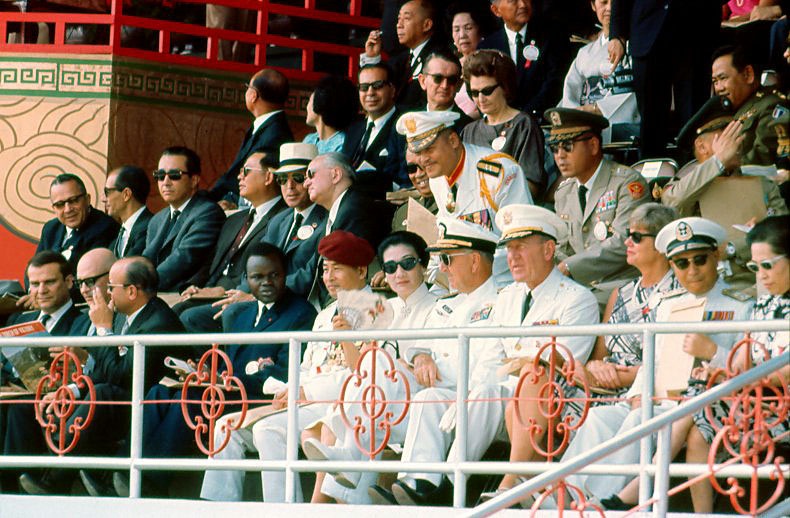


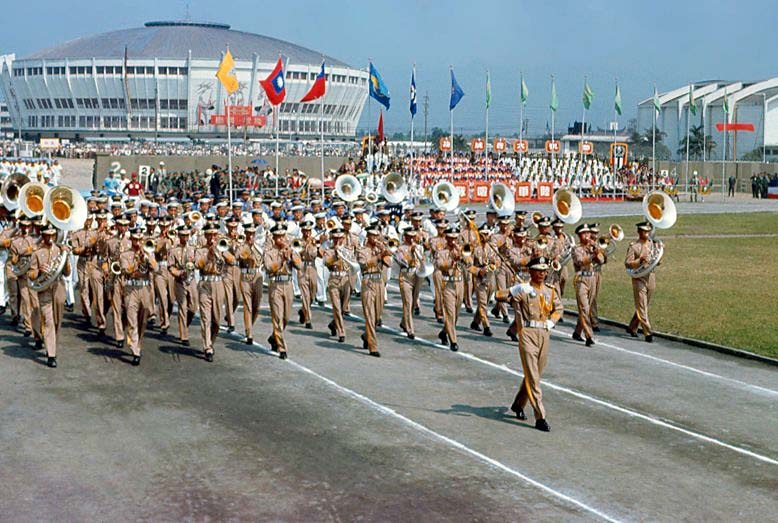
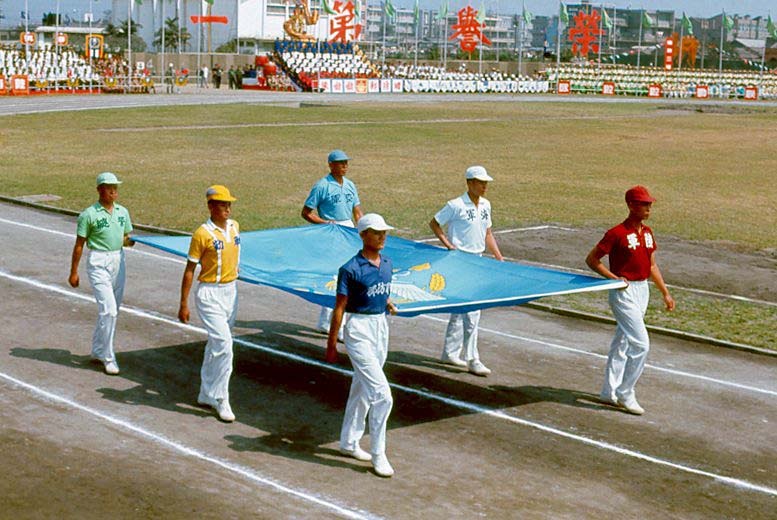
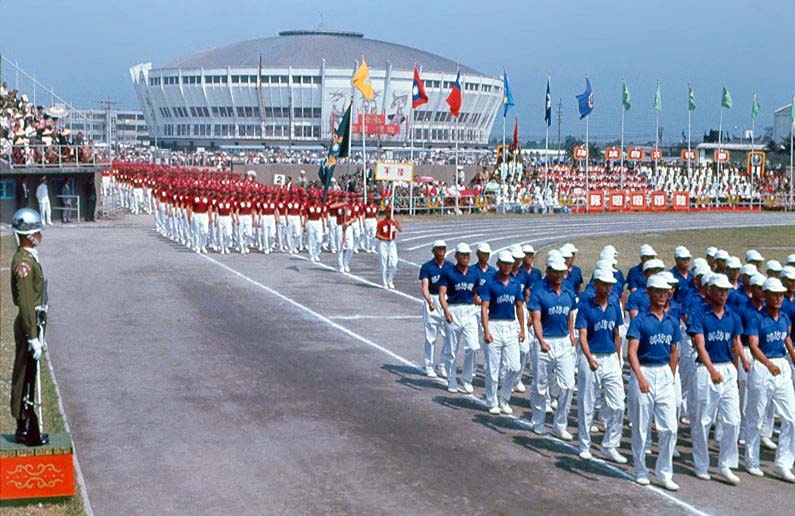
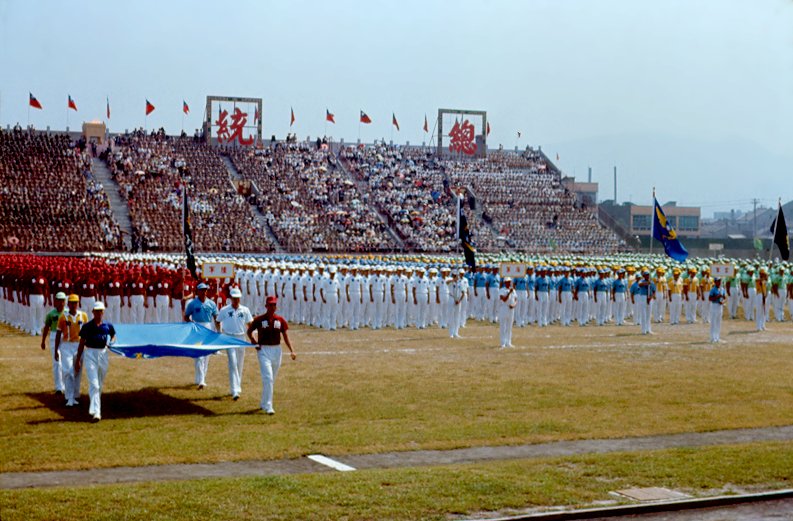

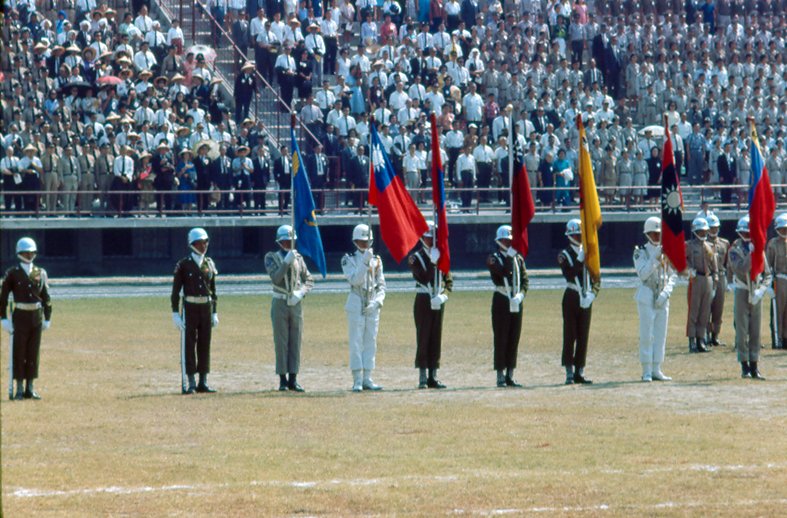
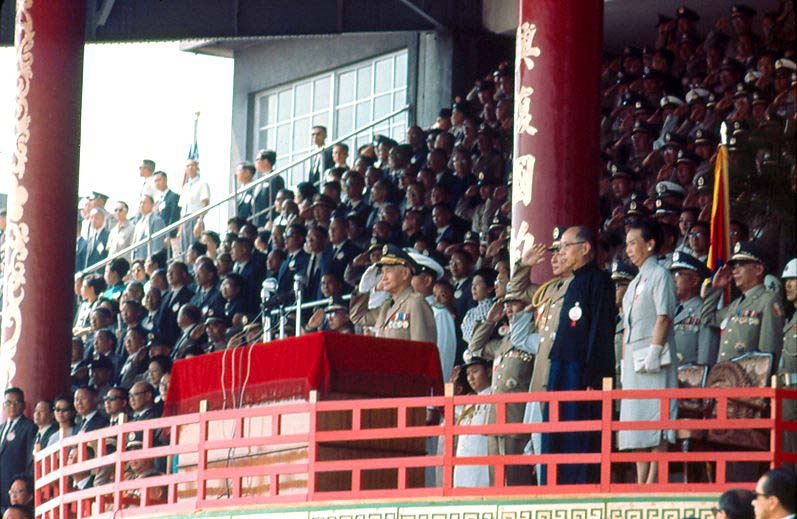
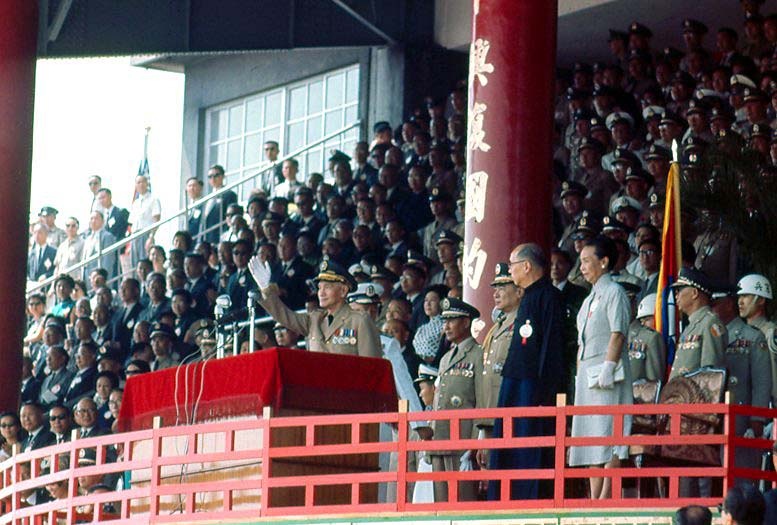
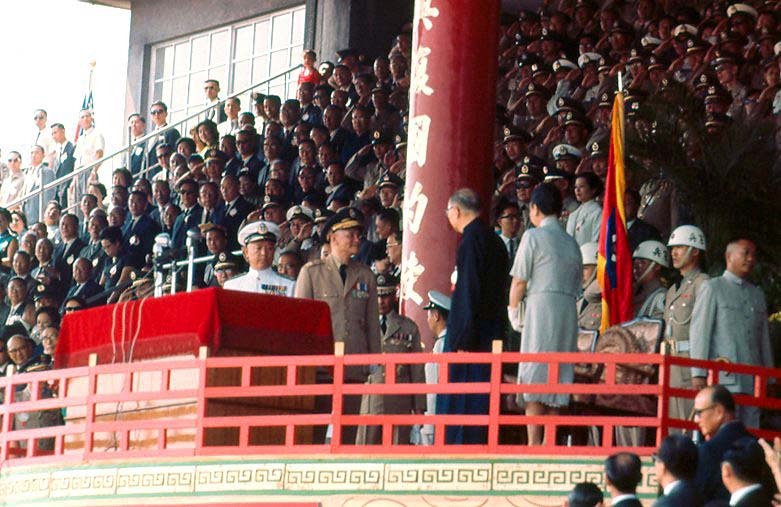
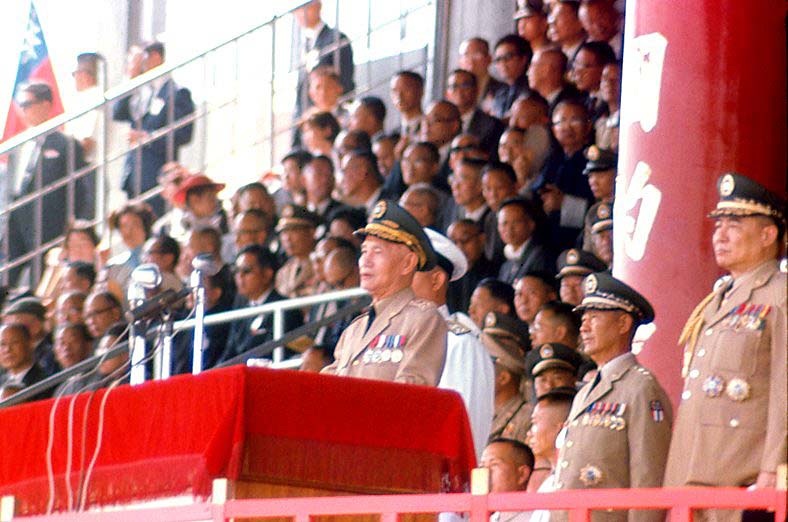
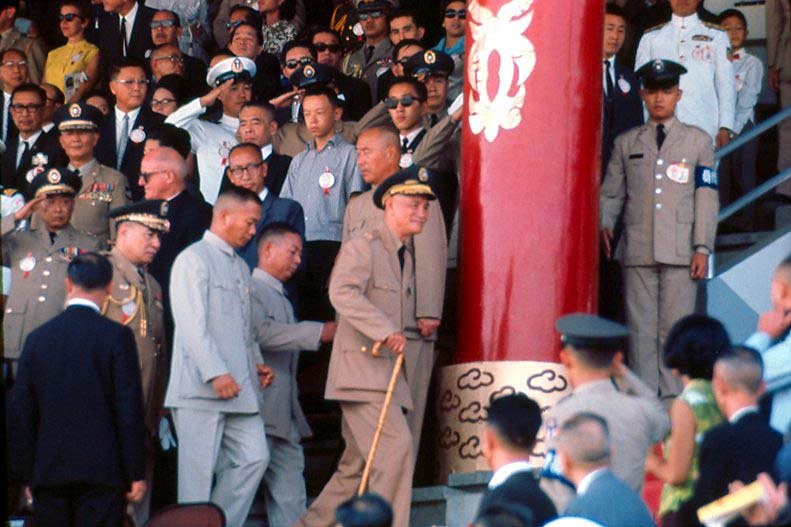
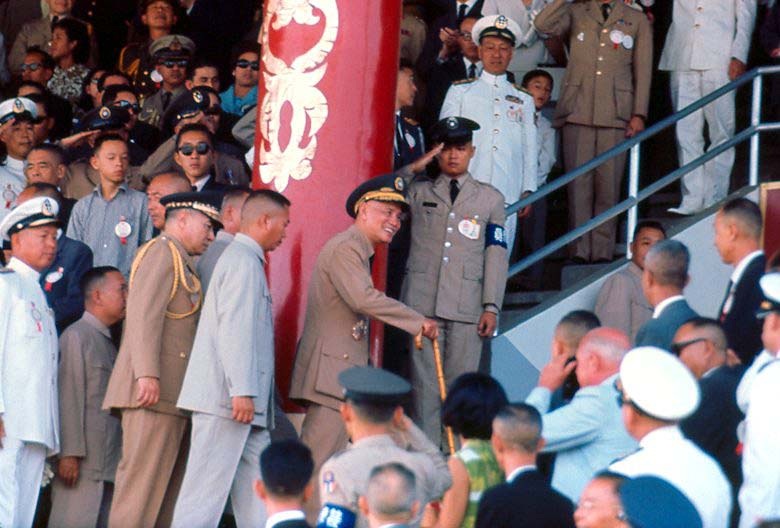
Double Ten Day October 10, 1966. Les Duffin (SLK 1962-63, 1964-66): "These are photos I took during an tri-service athletic meet in the Taipei Stadium to commemorate the Double Ten holiday. President Chiang Kai-shek presided and the man to Chiang's right in some of the photos (top row - last photo on right), dressed in black, is ROC Vice President C. K. Yen (Yen Chia-kan) who later succeeded Chiang as president." [02 July 2008] Les Duffin
(Top row-first photo on left) The two senior U.S. officers wearing white in the front row were the commanders of Taiwan Defense Command (USTDC) and the U.S. Military Assistance Advisory Group (MAAG). The Chinese general seated in the row right behind them (first photo-top row), second from right, is Chiang Kai-shek's son, Chiang Wei-kuo. Seated in the third row, toward the left, wearing glasses and looking at his program, is U.S. Ambassador Walter P. McConaughey.
Les Duffin continues, "...I was able to enter the stadium only because a uniformed ROC Army lieutenant who was leaving saw me outside and asked if I wanted to see the competition. When I said yes, he gave me his own ticket. Once inside, I bumped into a photographer for Pacific Stars and Stripes who took me to the press table and got me a press credential so I could stand on the press stand with all of the news photographers. If not for the kindness of those two complete strangers, I would never have had the opportunity to shoot these pictures." [July 2, 2008] Les Duffin (SLK: '62-'64, '64-'66)

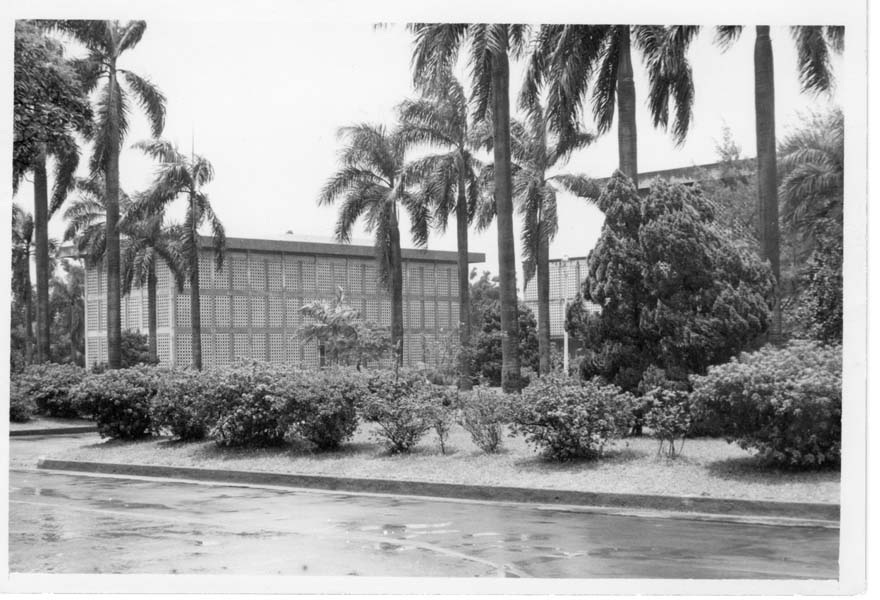
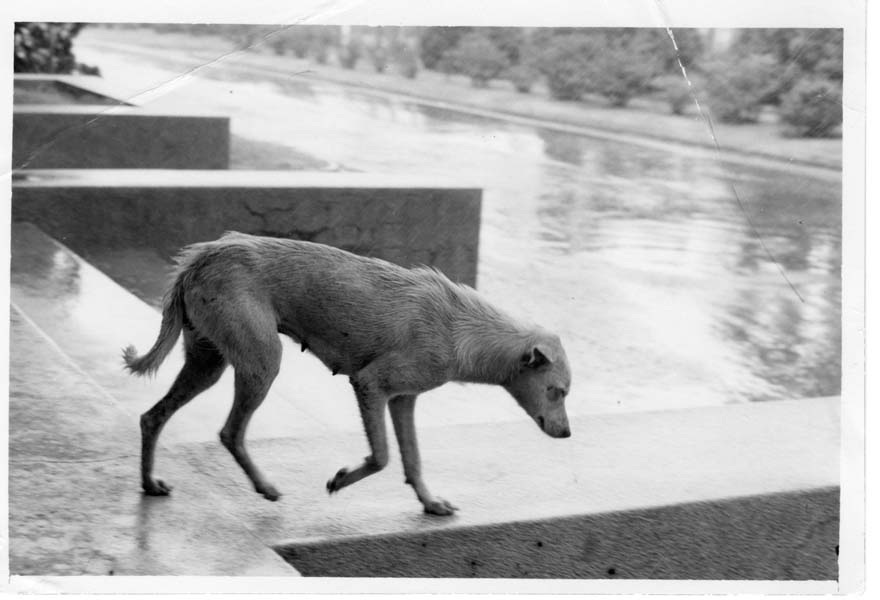
|
|